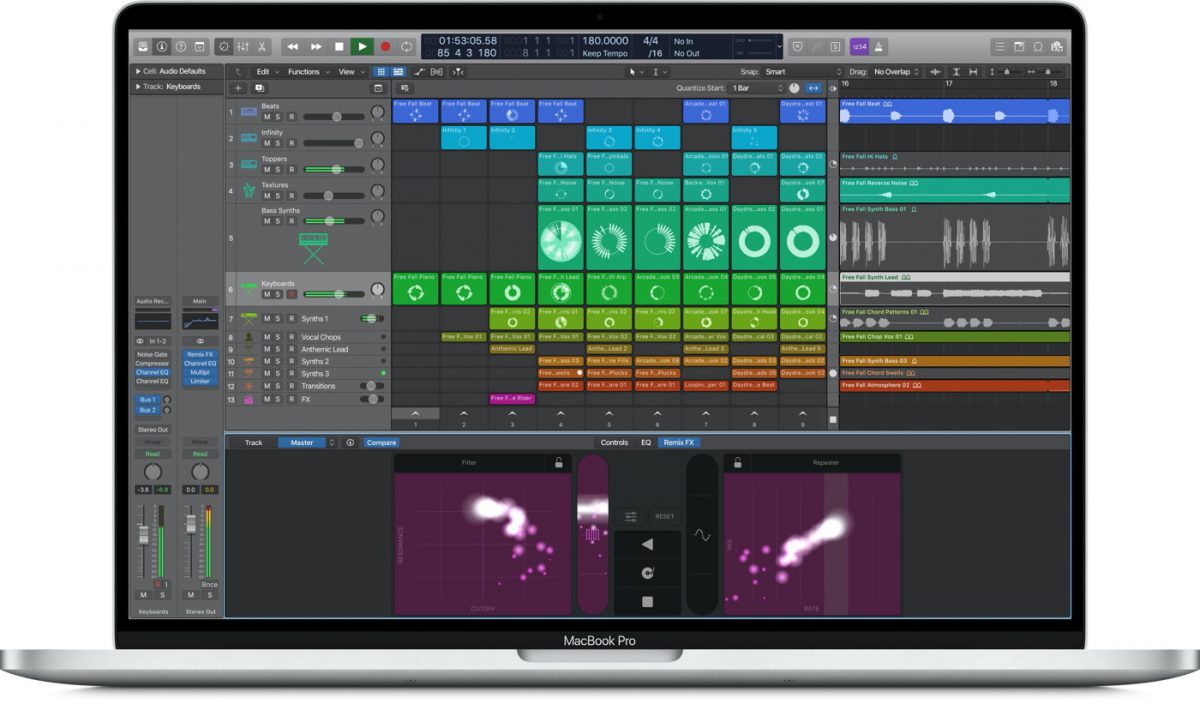GarageBand, once an online community of musicians is now becoming the Internet’s answer to a record label but giving much of the control to the musicians. GarageBand uses its community to review each other’s songs and tunes in exchange for posting their own music with an expectation that the best music will rise to the top (Coren, 2004: 2). “GarageBand at a Glance” provides a tour of the windows and controls in. D Zoom slider: Drag the zoom slider to zoom in for a closer view of part of the timeline, or to zoom out to see more of the timeline. E Add Track button: Click to add a track below the existing tracks in the timeline.
- Canon In D Garageband Download
- Canon In D Garageband Free
- Canon In D Garageband Software
- Canon In D Piano Garageband
Check out this informative video tutorial from Apple on how to mix songs in GarageBand '09. ILife '09, the software suite from Apple, is the easiest way to organize, view and publish digital content, like pictures, movies, music, and webpages.iPhoto makes managing your photos as easy as taking them. IMovie lets you edit and organize your home videos with ease. @DarrenRinger: Some methods of playing instruments may make things 'easier' under certain conditions, but limited in what they can do. For example, in standard tuning, the easiest way to play an A7-D change is probably to use the index finger four a top-four-strings barre on the second fret and middle finger on first string third fret, then pull the index finger back to a three-fret barre.

Piece of Music:
Title: Canon in D major
Composer: Johann Pachelbel
Topic:
Type of Music: Baroque Music
Course: Mandatory (Years 7-8)

Concepts and Composition Processes:
Structure and Pitch.
Pachelbel’s Canon in D serves as an excellent tool to introduce the terms “ostinato”, “riff”, “ground bass”, and “canon”. The aspects of pitch relating to harmony are also explored, with the suggested chords of the ground bass allowing for extension with regards to harmonising the major scale.
Teaching Activities:
Creativity/Composition:
Canon In D Garageband Download
Group work is most effective for this activity, as it allows students to experience the harmony created by multiple parts. The class is divided into groups of 4, with all students obtaining a pitched instrument that they are comfortable with (eg. guitar, bass guitar, glockenspiel, piano). The students are numbered 1 to 4, with number four taking the role of ground bass. Logically, it will be most effective if student 4 is playing an instrument capable of a fairly low register (eg. bass guitar, piano, cello). The students collaborate to create a 2 bar ground bass, and 3 simple melodic ostinatos, each with a length of 2 bars, all in the key of C major. The ground bass begins the composition, and following this, students decide when each part should enter or rest. Students experiment with which parts work “well” together, and decide on a final structure for their composition. They may choose to adopt a canonical structure, learning each other’s parts, or to introduce their parts in a different manner. An option for further extension is to adapt their 4 ostinati as loops in music software such as GarageBand or Acid, and experiment with assembling these ostinati in different ways to create different structures, and thus different applications of harmony, all still with ground bass.
Aural:
Showing the ground bass (below) while playing the piece will allow students with some knowledge of musical notation to follow along, and students with little/no knowledge of musical notation to begin recognising the correlation between pitch and the note placement on the stave.
A brief listening to Pachelbel’s Canon will lead to students commenting on the repetitive nature of the piece. Use The Ground Bass Game Worksheet (adaptation of a worksheet originally created by TES), and play the song once, allowing students to recognise that each block represents one repeat of the bass ostinato, and to place an ‘X’ in the corresponding box each time a new ostinato is introduced. Play a second time, allowing students to note the many variations taking place melodically, and also with regards to the other concepts of music.
Canon In D Garageband Free
As a fun listening exercise at the end of a lesson, watch the video below titled “Pachelbel Rant” by Rob Paravonian.
Canon In D Garageband Software
Musicology:
Students are to use the internet to investigate the history of Ground Bass, identifying the period it first appeared in, three composers who employed this technique, and why they think it was used commonly, writing their findings on their student web blog. They are then to express how repetitive patterns like those found in Pachelbel’s Canon might be found in today’s music, and to embed a link to a YouTube video of another song, of any era, with a repeated pattern.
Performance:
Allow students to rehearse the piece they composed in the ‘Creativity/Composition’ section, in their groups, developing ensemble awareness. Give the option of students performing on different instruments to the ones they composed on, if they feel that this will benefit the performance. Each group is to perform the composition in front of the class, with a brief class discussion after each performance. Encourage the other groups to identify the ground bass and evaluate the effectiveness of the other ostinati in creating a cohesive, melodic piece of music. Also encourage students to note similarities and differences between each group’s composition.
Canon In D Piano Garageband
Procedure
2722canonind.mid BumbleBee-Amin.mid JSB Inv 1-Cmaj.mid Musette-Dmaj.mid Ode to Joy in GMaj.mid Queen of Sheeba in CMaj.mid Russian Dance in Gmaj.mid Sugar Plum Fairy in E min.mid mse5251-Gmaj.mid solfeggietto-Cmin.mid |